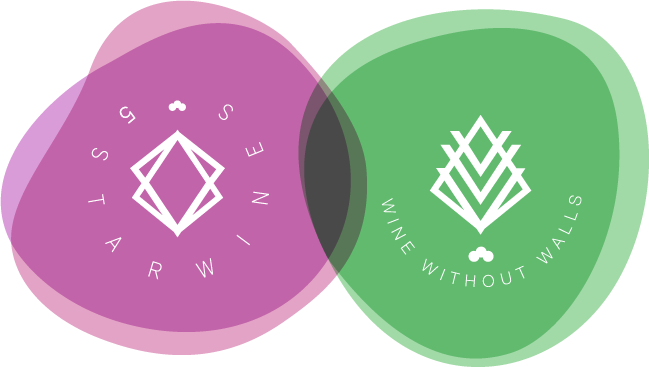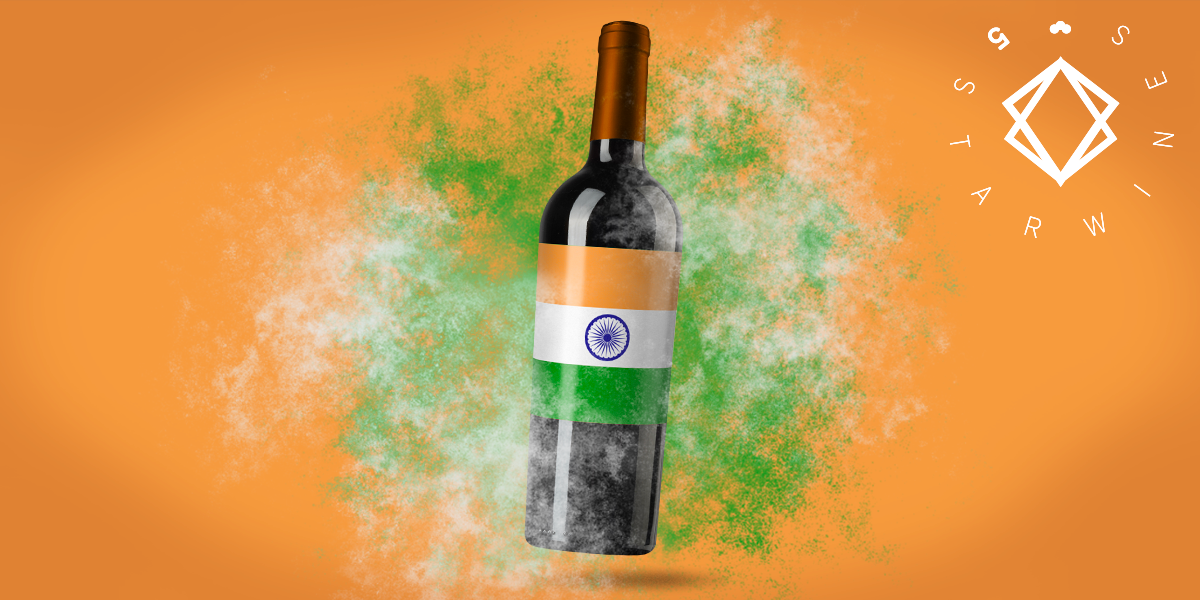
by Ornella Begalli | Jun 27, 2019 | Blog Post
Often referred to as one of the most important emerging markets, the Indian market is inherently fascinating both for its opportunities, as well as for the challenges it presents. Such a multifaceted panorama deserves special attention, especially when it comes to its wine market.
The bad news
India does not have a wine culture. The drink is so alien to Indian society that it is considered a luxury item, so much so, that it is heavily taxed. In four Indian states alcohol is completely banned, and in others it is severely restricted. There is a country-wide advertising ban on alcoholic beverages and the legal drinking age is 25. All these hurdles to the wine market are then reinforced by the religious ban on alcohol that affects a large part of the population.
The good news
With more than a billion inhabitants, India is the second most populous country in the world. With 800 million people under 35 years of age, it is also the youngest nation in the world, this means it holds the greatest opportunities for growth. Their GDP grew 6.7% in 2018, and in 2019 it is estimated to hit 7.5%, exceeding that of China’s. Alcohol sales in the country are growing and even though “traditional” drinks such as whiskey, rum and beer continue to dominate with regards to the nation’s alcohol consumption choices, these trends have not prevented the wine market from attracting the attention of consumers.
Opportunities
The growing availability of international and national wines has provoked a significant interest in this product, causing a change in consumer choices. Rapid urbanization, the rapprochement of the Indian and Western lifestyles, and the rise in the average household income has further contributed to wine’s growth in popularity. Between 2010 and 2017, the Indian wine industry recorded an annual growth rate of 14%, meaning that this drink is experienced the highest registered increase on record with regards to alcohol sales as a whole (from Wine Intelligence, the India opportunity).
Data
According to the India Wine Insider – the first report on the Indian wine industry published in 2017 – most of the country’s wine consumers prefer international wines to domestic ones. Although they are more expensive, foreign wines are perceived as being “superior” in terms of quality and packaging. They are even considered to make more suitable gifts. The most relevant market segment in the country are women, who apparently buy as much wine as men, and indeed spend even more on a bottle of wine than their male counterparts. As in other Asian markets, Indian women see wine as an element that makes them more elegant, sophisticated, even emancipated.
At present, India is widely undervalued as a consumer of wine, but things are going to change. How do we know? The national per capita consumption of wine is still rather low, but about the same as China’s was 15 years ago. Why should we pay attention then? Because today China has a massive wine industry and quite frankly, the same could happen to India in a few years.
We want to keep you informed by revealing the trends found in contemporary wine industries.
But to do that, we need your email – leave it here!
[yikes-mailchimp form=”2″]
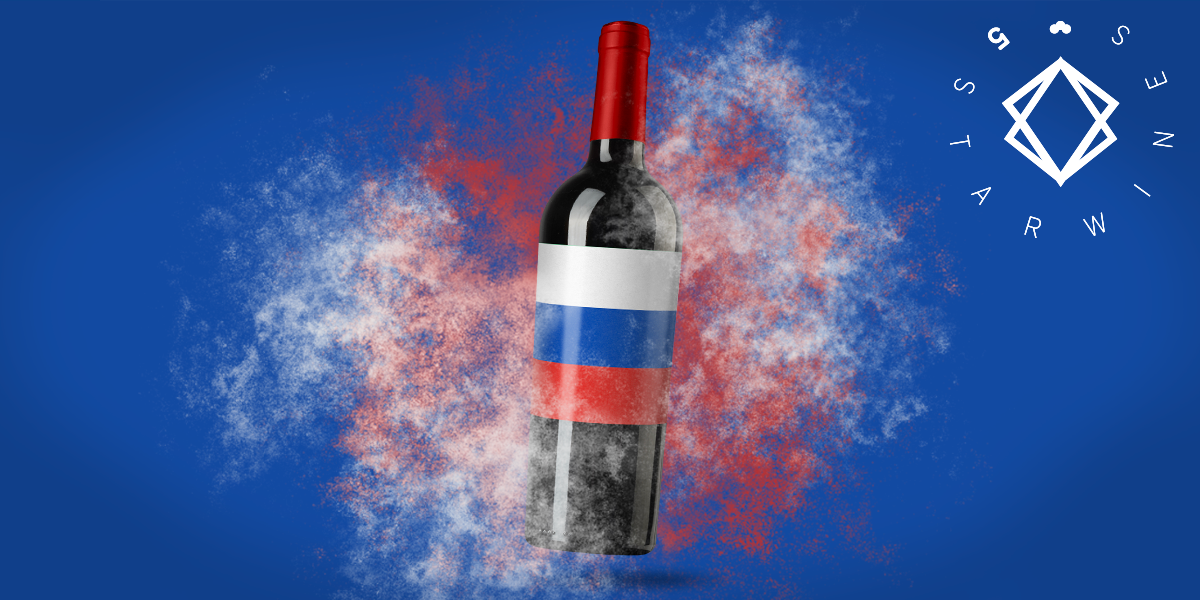
by Ornella Begalli | Jun 14, 2019 | Blog Post
After the political crisis of 2014, the Russian market underwent considerable transformation and the repercussions endure to this day. The collapse of the Russian Ruble and the embargo on products from certain countries made things difficult, however, these were not unhappy consequences for everyone: Italian wine producers saw benefits to hard times, then and now.
In Russia, it is tradition for empty bottles to be placed on the floor. It is said this custom date’s back to the time of the Napoleonic wars. After the Battle of Paris in 1814, the Russian Cossacks realized that taverns calculated their bar tab by the number of bottles left on the table. After making this discovery, it became clear that hiding bottles lessened their evening’s expenses. Tradition aside, in this article we want to focus instead on what these bottles contained when full, and when they are found on Russian tables.
The Russians’ favorite drink? No, it’s not the vodka
Stereotypes teach us that Russian drinking culture is entirely based on vodka. Even though vodka has been a cultural pillar of society for many years– this statement is no longer entirely accurate in terms of sales and consumption. We recommend that you put away those shot glasses and take out a nice mug, because beer is the drink of choice in Russia!
Already by 2017, beer accounted for 83% of national alcohol sales and consumption. The 2018 Football World Championship also improved the status of this drink. The FIFA World Cup had a huge impact on sales performance in the Russian market in general, and there was an overall 5% increase in beer consumption: it is thought that thousands of foreign tourists accustomed to enjoying a glass of beer during matches influenced their hosts, transferring this beloved custom to Russian fans (see Russia’s alcohol market is among the largest in the world – and full of opportunities for international exporters, World Food Moscow). As a result, imports of this drink have skyrocketed. Beer producers are not the only ones seeing increased sales. It seems the Russian Federation is as thirsty for beer as it is for wine. The Russian wine market is lucrative for wineries, but it is still an arduous endeavour.
The panorama is a little bleak
Due to the Russian-Ukrainian conflict, the Ruble collapsed in 2014, creating complications that still exist today. In 2013 the Russians could afford to pay for bottles of Chianti that had been marked up by 300%, only two years later many wine bars in the country found themselves having to offer their customers wines with a different price/quality ratio. In the same period, the demand for wines by the glass had increased and restaurants and bars had to start establishing business relationships directly with producers (see Russian wine lovers are flexing their wine palates, Meininger’s Wine Business International). It is estimated that, in the coming years, the rising inflation rate and the expected increase in VAT will further contribute to the worsening situation, limiting the population’s purchasing power.
Advice from an insider
How can we counteract this rather negative landscape? How does one go about exporting wine to Russia? We asked Nikolay Chashchinov, Director of the Millesime Wine School in St. Petersburg:
«I think Italian producers are in a privileged position over others. We Russians have an unbridled passion for Italian wines and this can only be a huge advantage for your country.What should an Italian wine producer do? First of all, it is essential that his wines have been published in some of the most relevant publications and guides on the market: WineSpectator, Wine Advocate, 5StarWines or Gambero Rosso. A decisive step is the organization of Incoming programs, aimed not only at importers: given the growing decisive role of restaurateurs, this type of activity should also be directed to these professionals. Small producers have to focus on restaurants: the market is changing and the role of large importers is coming to a halt, leaving room for buyers in large retail chains»
In conclusion…
Chashchinov is not wrong: Italian producers are indeed very much at an advantage over others. Firstly, because, there is no embargo on alcohol from Europe. Secondly, because when it comes to wine, Italy is already the reference country in Russia. Compared to producers in other countries, it is much easier for an Italian winery to establish contact with Russian consumers and entrepreneurs. This can also be achieved through events such as Vinitaly Russia, organised by Vinitaly International. Nikolay’s advice was sound, registering your cellar in one of the guides recommended is a very good idea and our (totally impartial) suggestion here would be to register for 5StarWines.
Our BRICS countries’ series is currently on its second article…
The next one will be about India: do you want to make sure you don’t miss it?
Then leave your e-mail address here.
[yikes-mailchimp form=”2″]
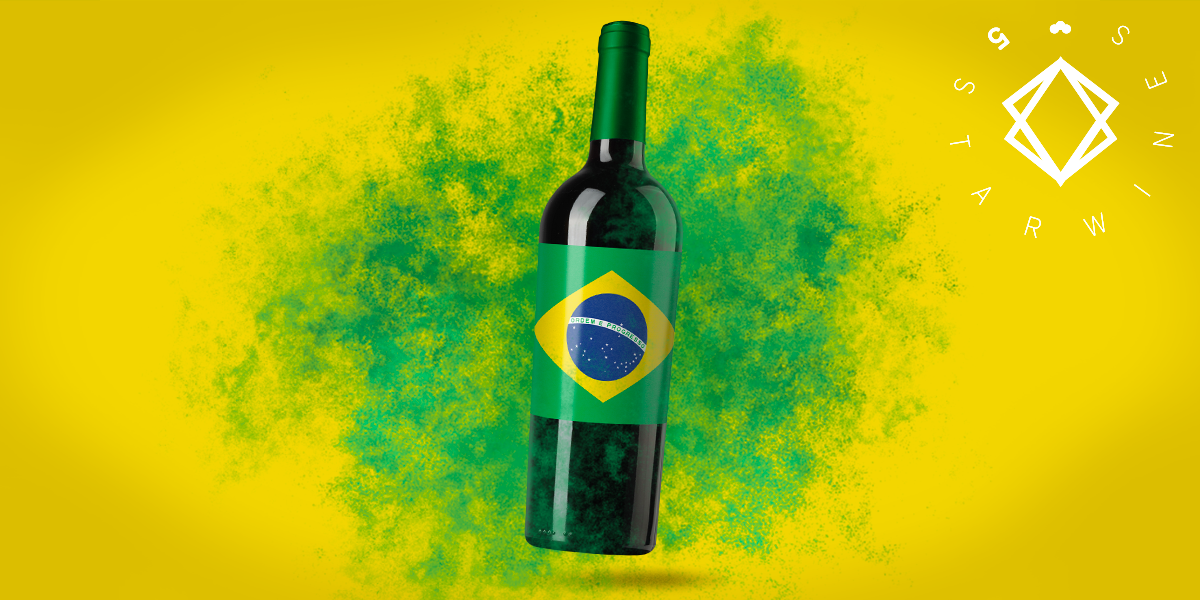
by Ornella Begalli | May 29, 2019 | Blog Post, Uncategorized
Imagine staring at a crowded shelf of wine labels. Most of them come from Brazil, Chile and Argentina; some from Portugal and Italy; a few from France and Spain. Now imagine that this shelf is in a wine shop, in the eleventh most populated city in the world, in the fifth largest country on the planet. Add to all this that in this country, wine culture is still very young and consumers are particularly intrigued by wine. At this point you’re probably wondering where you’ve ended up… bem-vindo ao Brasil!
Brazil’s potency as a wine consuming country is underestimated by many and the idea that it does not have a sufficiently developed wine culture is rooted in Brazilian history. This conviction, even if it is partly true, should have changed by the early ’90s, when the Brazilian economy opened up to the rest of the world. However, just because Brazilians started to consume international wines around 30 years ago, this does not mean that they are foreign to this product.
Brazilians and wine
The first vines were brought to Brazil’s shores in the mid 16th century by Portuguese settlers, but it was the arrival of Italian immigrants in the 19th century that changed the destiny of this country as a producer and consumer of wine. It is no coincidence that the Rio Grande do Sul region – where most Italians settled – is now the area where 90% of all local wines are produced. Italians brought many of their technical skills and consumption culture to Brazil. They also raised the quality of Brazilian wine and thus conferred on it a certain economic importance.
From the end of the 1800s to the end of the 1900s, almost exclusively, local wines were drunk in Brazil. Nowadays things have changed, but the most dangerous competitor for a foreign producer is still the Brazilian producer de vinho. To date, 62% of wines consumed are domestic products. One might beg the question, how is the remaining 38% divided? Among the other countries, it is Chile, Argentina and Portugal that stand out (from Wine News, L’Italia del vino cresce in Brasile, a small market in numbers, but a driving force for growth, 2019).
With respect to Brazilians as buyers, a 2019 Wine Intelligence Brazil Landscape report discusses the growing wine market in Brazil saying there is rising consumption as well as rising consumers.
Over the past three years, Brazil’s wine lovers have increased in number reaching 32 million. 70% of them drink at least one glass of wine a week and the remaining 30% consume one glass at least once a month. It is the younger generations that have boosted growth: enthusiasts have become curious, trying new varieties, and they are also willing to spend their money on particular labels. Brazil also happens to be the 26th most attractive wine market in the world and the country’s wine market has grown exponentially in record time (in 2017 it was still in 38th place).
Italy’s role
What role does Italy play in all this? ICE (The Italian Foreign Trade and Investment Agency) believe its prospects are positive. Despite a 9% decrease in sales volume from 2017 to 2018, Italian wine has seen the value of its exports grow to 40.6 million euros (+3.23%) with a 10.9% of market share, among foreign wines. In addition to this, in the first nine months of 2018 the Brazilian market was worth as much as 26 million euros to Italian wineries (WineNews states that in Brazil, consumers increased within a three-year period 2016-2019, Italy still lags behind in 2019). Most of the Italian wines imported to Brazil still come from the more popular wine regions like Tuscany, Piedmont and Veneto. What makes Italy competitive is its wide range of native grape varieties, a distinctive aspect of its viticultural tradition which makes it appealing in various market niches in Brazil.
Advice from a professional
With these numbers, Italian producers need a well-thought-out plan before entering the country. Bernardo Pinto, Technical Director for Zahil Importadora, commented:
« The Brazilian market is changing, in the sense that trends can arise and disappear in a few months. It [the market] is passionate, in fact we Brazilians like travel, stories, people. When a product excites us, we remain tied, almost bound, and we do everything we can to become its ambassador… the average Brazilian has no in-depth knowledge of wine, but it is also true that the interest in this drink is enormous. Competition here is ruthless, not to mention the bureaucracy: the system of duties requires the consultation of specialized professionals
In order to conquer the largest country in South America, an Italian producer must keep all these aspects in mind and find a balance between sales potential and the efforts required. A producer must also have a clear goal. What do you want to do in Brazil? Do you want to improve distribution? Increase business volume? In any case, the best advice you could receive is to find a good partner, someone to do the work, on site. But that doesn’t mean that an entire operation would be on your shoulders, but, the producer does have to be present in-country to collaborate. To sell in Brazil you have to see and be seen, know and be known »
The future of Italian wine in Brazil
According to Euromonitor forecasts, the Brazilian wine market will continue to grow, reaching 352 million litres by 2022. This will also affect Italian wine imports, which should see a 17% increase in that same year. Veronafiere, the leading direct organizer of events in Italy and a natural hub for the international promotion of the Italian industrial systemis also considering Brazil a market of the future. In 2018 they organized the first edition of Wine South America (the 2019 fair will be held in in Bento Gonçalves from September 25th to 27th). They also added a session on the Brazil wine market in the 2018 edition of wine2wine, the forum dedicated to the wine business (livestream available on Facebook).
Brazil is not the only expanding market you should be keeping an eye on: to find out which others are developing, subscribe to our newsletter.
[yikes-mailchimp form=”2″]
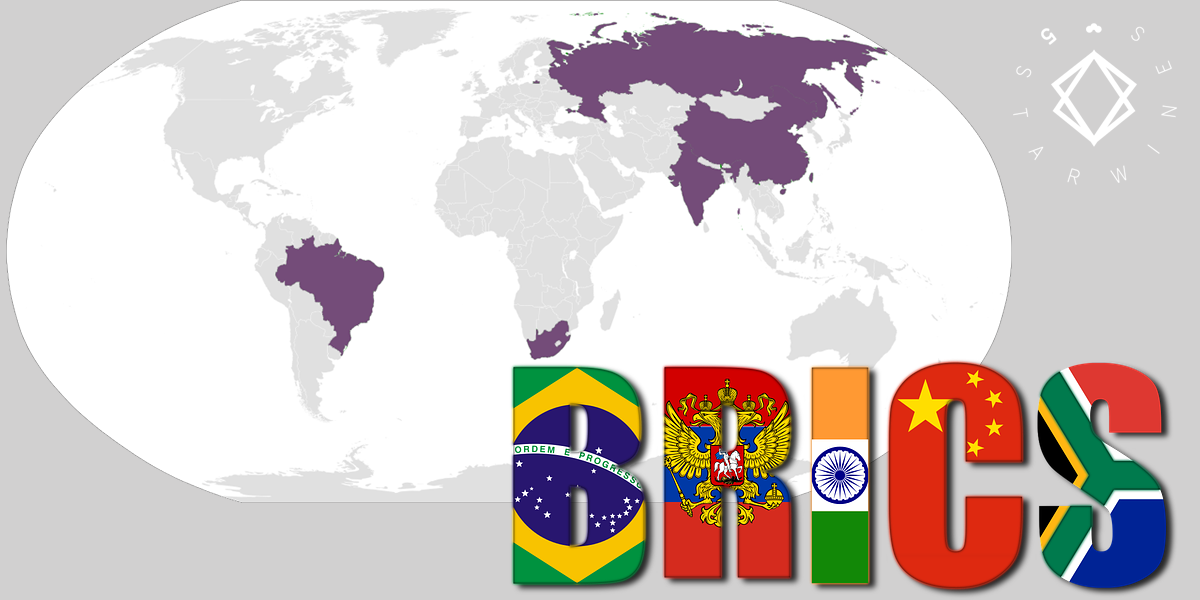
by Ornella Begalli | May 16, 2019 | Blog Post
Participation in wine competitions can provide several opportunities to wine exporters. There is greater consumer appeal as the wine receives a promotional boost and there is a general improvement in brand reputation. It is clear that these factors give impetus to thousands of wineries which continue to register their products in competitions each year all around the world. Perhaps, less clear however, are the strategies and research carried out by the organizers in planning these competitive events.
When organizing wine competitions, one must take into account the constant evolution of the international market; pay attention to changes in trends, consumption and, of course, the political climate, in order to offer the competing winery with the most valid and productive service possible. One of the ways to provide a truly advantageous experience is to recruit judges from key wine export countries. Moreover, it is prudent to make a commitment to hire not only professionals of a certain caliber, but also to work with wine experts who understand areas of interest in the Italian wine market. In this regard, members from the BRICS countries—Brazil, Russia, India, China and South Africa—are well suited, having been the center of attention for most of the 2000s. Despite having lost some ground in 2015, they have recently returned to centre stage and deserve special attention.
New wine export routes
The last 20 years have been characterized by the gradual establishment of a “geo-economic aggregate” identified by the acronym BRICS. The states belonging to this group share some fundamental elements: the condition of developing economies, a large population, a vast territory, abundant strategic natural resources, strong GDP growth and shareholders in the world’s trade over the last decade.
The conglomerate was first identified in 2001 by analyst Jim O’Neill in a document prepared for the investment bank Goldman Sachs and cited in a report by the Italian Chamber of Deputies (Camera dei Deputati, BRICS, Brazil, Russia, India, China and South Africa, 2015). Initially, O’Neill only considered Brazil, Russia, India and China (South Africa was added later). According to the analyst, the four nations would dominate the century that had just begun and therefore, opening the doors to the world economy to them became important. A few years later O’Neill saw this coming: it was only a few years ago that the BRICS countries held 20% of the world’s GDP and about 16% of international trade. They still include 42% of the total population and 25% of the entire extension of the Earth. These markets been experiencing a long high, albeit with varying rates of economic development, and they still had very significant growth prospects.
BRICS: yesterday, today & tomorrow
International powers met for their first informal meeting in 2006 in New York, it was in 2010 that they decided to invite South Africa to participate. The first meeting with Heads of State and Government was held in Tōyako (Japan) on July 9, 2008, on the margins of the G8. This first summit became an annual meeting that continues to this day. The 2019 summit will be held on November 13 and 14 in Curitiba, Brazil.
Since their first summit, relations between the five BRICS have been consolidated and the countries have now become partners in various fields of cooperation, from economy to geopolitics, moving through security and the fight against terrorism. The objectives underlying their cooperation range from trade to the development of infrastructure, their ambitions lie in shifting the world’s centre of gravity from the West to other meeting points.
Although they are similar in many respects and share the same goals, it is important to bear in mind that they are five distinct countries, with peculiar characteristics and different geopolitical situations. In 2013, after the global economic crisis, the fortunes of these 5 states began to diverge and while they all responded positively to the stimuli of the financial crisis (as opposed to Europe and the United States), only India and China have grown exponentially, leaving the other nations behind.
While in recent years the Asian IC has never fallen below 6% of GDP growth (and shows no signs of slowing down), the data and forecasts of the International Monetary Fund (IMF) confirm how much Brazil, Russia and South Africa struggle to keep pace with India and China. Nevertheless, by 2018, the IMF had confirmed a positive development trend for the five BRICS leaders, drawing international attention to these countries. Specifically, the data shows that India will grow with a real GDP rate of 7.4%, China 6.6% (which would ensure that the U.S. economy is overtaken by 2030), Brazil 2.3%, Russia 1.7%, and South Africa. (The BRICS, the West and the “cellophane of colonialism”, 2018).
Final Thoughts
The BRICS therefore represent an interesting opportunity for both Italian wineries that are appearing for the first time on foreign markets, and for wineries with more experience in wine exports that aim to explore countries far from the radar, but that are still relevant. As previously mentioned, the BRICS front is compact, but not unique. Each country must be evaluated as a separate entity and tailor-made wine export strategies must be adopted for each individual market. To better understand the trends and needs of each country, in the coming months we will take you to explore Brazil, Russia, India, China and South Africa, with the help of some of the 5StarWines judges and other figures instrumental to our discussion.
To make sure you don’t miss any of our articles, you can subscribe to our newsletter here:
[yikes-mailchimp form=”2″]

